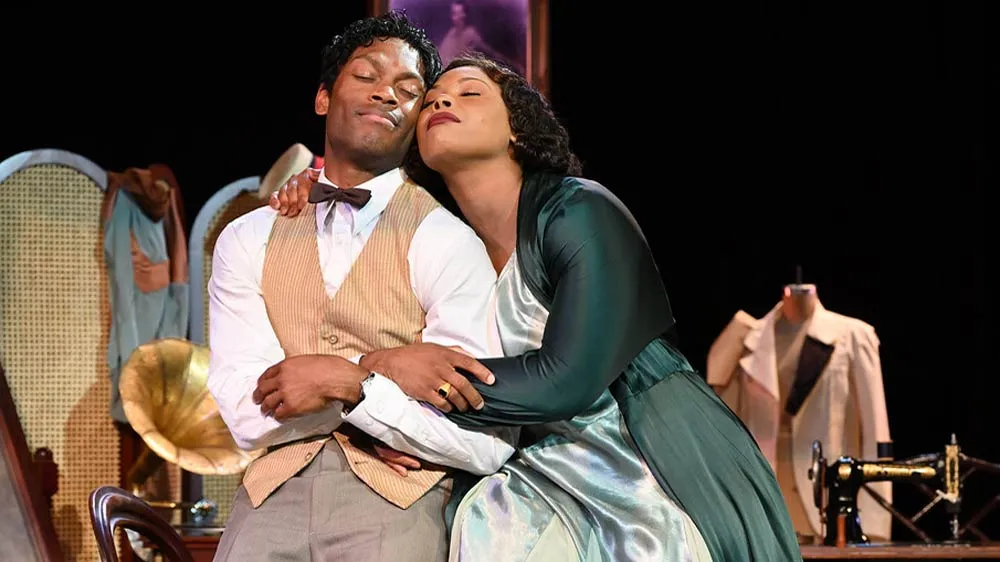April 24, 2015
That Little Blue Box: Tiffany & Co.
Matthew Wexler READ TIME: 4 MIN.
This article is part of EDGE's Jeweler to the Stars series, sponsored by Jewelers Mutual Insurance Company. To learn more about how you can protect your most valuable possessions, click here.
There's jewelry... and then there's Tiffany and Company. Since 1837, the iconic brand has been a coveted collectible for anyone looking to add a bit of bling to his or her life. Well -- not exactly. Tiffany & Co. is actually the story of the American Dream and its founder, Charles Lewis Tiffany, whose pursuit of luxury would define generations to come.
Originally launched as a stationary and "fancy goods" store in partnership with John B. Young (the pair had borrowed $1,000 from Tiffany's father), the shift to diamonds came in 1840 with the fall of Louis Philippe as French aristocrats scrambled to sell their diamonds in exchange for hard cash. It was the first appearance of major gemstones in the U.S. and the press took note. Another publicity stunt in 1858 involved repurposing 20 miles worth of telegraph cable into collectible objects like paperweights and watch charms.
Upon Young's retirement in 1853, Tiffany took control of the company and continued to forge new ground, such as introducing colored gemstones to the market in 1876. But it is his son and heir, Louis Comfort Tiffany, who established the brand as one of visionary artistry, incorporating nature and handcrafted elements into its designs.
An Intimate Connection
Celebrating the world's greatest love stories, Tiffany & Co.'s recently launched "Will You?" campaign is both timeless and progressive. Shot on location in New York City by famed photographer Peter Lindbergh, the campaign celebrates love's diversity in various incarnations.
While many consumers may expect traditional couples (heterosexual, same ethnicity), these distinctly modern interpretations break the mold and feature a selection of couples at different stages of their relationships. One ad shows a couple at their wedding with a child already in the picture, while another celebrates a same-sex couple about to commit to marriage.
"No other brand embodies the emotion and trust that Tiffany does for those who are committed to one another," said Caroline Naggiar, chief marketing officer of Tiffany & Co. "People have always looked to Tiffany to commemorate the most precious and joyous moments in their lives."
Bling Without the Ring
Just because you're not walking down the aisle doesn't mean that a piece of Tiffany jewelry shouldn't be in your near future. The Tiffany Masterpieces collection is a dynamic array of necklaces, bracelets, earrings and more - each showcasing modern settings and featuring rare gemstones such as colored diamonds.
The recent collection, released last fall, marks the debut of a number of pieces created by design director Fracesca Amfitheatrof. The trained jeweler and silversmith joined Tiffany & Co. in 2013 and previously designed illustrious collections for the likes of Chanel and Fendi. Archival diamonds set in square bezels served as inspiration for her most recent work, harking back to the fluid designs of the 1920s.
But it's not just the precious stones that make these signature designs unique. Equally important is how they drape and accentuate the body of the person wearing them. And while diamonds are a girl's best friend (and many men's), Amifetheatrof also incorporates a wide variety of dramatic gemstones, including citrine, turquoise and white agate.
Commitment Beyond the Wedding Day
While you may dream of wearing and/or bestowing a Tiffany ring on your wedding day, the company's corporate responsibility is a commitment not only for today, but for generations to come.
Owners of Tiffany jewelry will be proud to know that extensive efforts have been made with rigorous corporate responsibilities in place. "Tiffany & Co. is committed to obtaining precious metals and gemstones and crafting our jewelry in ways that are socially and environmentally responsible," states chairman and CEO Michael J. Kowalski in the company's 2013 Corporate Responsibility Report. "It is simply the right thing to do; and our customers expect and deserve nothing less."
And as for that famous blue box? Founder Charles Lewis Tiffany chose the robin's egg blue color to adorn the cover of Blue Book, the company's catalog first published in 1845. It has since become synonymous with the brand and surely invigorates any gift-giving moment. In spite of the ultimate luxury that it might evoke, 89 percent of the blue boxes are made from recycled sources. "Tiffany & Co. has demonstrated proactive leadership in minimizing its forest footprint, says Lafcadio Cortesi, Forest Campaign Director, Rainforest Action Network, and "encourages its colleagues to join in helping to protect endangered forests around the world."
Tiffany & Co. has been comprehensive in its efforts to address corporate responsibility, not only as it pertains to some of the world's finest raw materials, but also in terms of its work force, both directly and through its partners around the globe.
Matthew Wexler is EDGE's Senior Editor, Features & Branded Content. More of his writing can be found at www.wexlerwrites.com. Follow him on Twitter and Instagram at @wexlerwrites.


